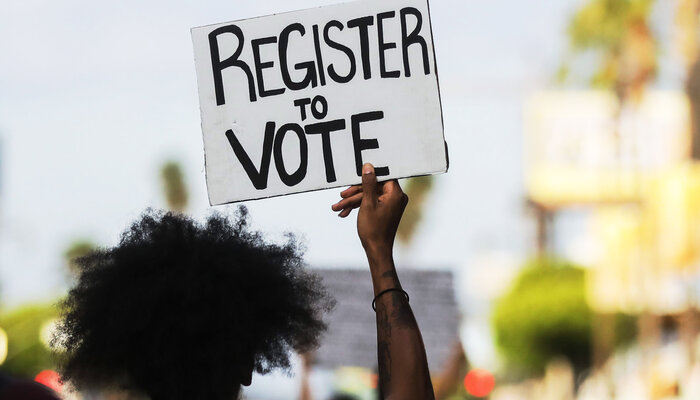In recent weeks, we’ve seen protesters take to the streets around the country to decry police brutality. Like so much in our country, this injustice is born disproportionately by communities of color. And in far too many places, protests have been met with even more police violence.
Many, including President Obama, have encouraged protesters to also vote in order to “bring about real change.” Indeed, everyone should vote, but it is important to recognize that structural barriers to the ballot box have undermined this option for many of the most marginalized Americans. And in fact, it’s for that very reason that some people likely feel compelled to march — they feel that it’s the only way that their voices can be truly heard.
Voter suppression falls heavily on communities already burdened by policing, arrests, and felony convictions. For example, in all but two states, citizens who are convicted of felonies are legally prohibited from voting for at least some period. Given the racially concentrated nature of policing and incarceration, this means that some communities see their political power seriously reduced relative to others. In New York State, for instance, just 14.3 percent of the citizen voting-age population is Black, but Black residents make up 49.5 percent of those in state prisons and are therefore disenfranchised.
Compounding the problem, as the Brennan Center shows in a recently published study, felony disenfranchisement has major “spillover effects.” In other words, eligible voters who live in neighborhoods where felony disenfranchisement is rampant turn out to vote at lower rates. However, work by political scientists also shows that citizens whose loved ones are caught up in the criminal justice system are more likely to take other political actions — including protesting in the streets. For citizens who are disenfranchised themselves or whose loved ones are not allowed to vote, protesting is a way to make their voices heard.
Of course, felony disenfranchisement is not the only structural barrier to voting for low-income and minority communities. As our work on voter purges has shown, purge rates have increased dramatically in parts of the country with a history of racial discrimination. If voters show up to vote only to find that they are off the rolls, they often cannot make their voices heard — and are perhaps less likely to trust the democratic process going forward.
Covid-19 is making the situation even worse and is falling disproportionately on Black communities. As the nation prepares for the November election, many voters will request and cast their ballots by mail. While vote by mail is an important option during a pandemic, research shows that mail ballots cast by racial minorities are rejected at higher rates — yet another way in which people of color’s voices might be silenced this year.
Democracy means more than voting on Election Day. It means governance by the people. Protest and other forms of expression are means for the people to be heard. This is doubly true when we consider the multitude of suppressive tactics used against the voting rights of voters of color.
Our political system depends on every voice being heard. In the voting booth, voting can accomplish much change, but not everyone can vote. Additionally, not everyone will want to vote when so many citizens feel that elected officials are making it harder to do so. Democracy functions best when we are all included. When we are not, it should not surprise anyone that Americans are making their voices heard through protests.

